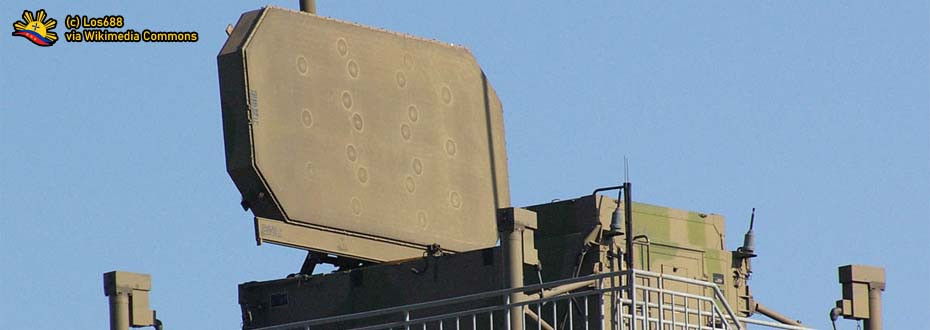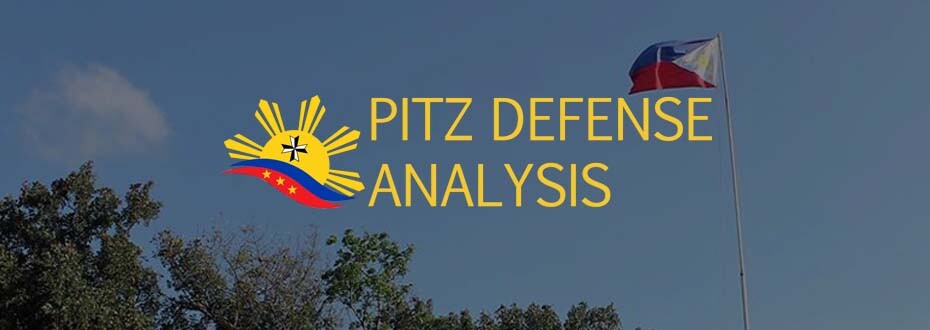At a glance, the
National Expenditure Program is the budgetary plans and programs of the executive branch of the government - from the Office of the President down to the respective departments and units, along with the budgetary requirements of the Judiciary and Legislative branches of the government, presented before the national bicameral legislature for budget deliberation. From here, both the Senate and House of Representatives, having the power of the purse,
will trim the budget further down.
On the 2025 National Expenditure Program presented before the congress for deliberation, the budget allotted for the Revised AFP Modernization Program as proposed
comes at around Php 50 Billion, which is basically similar to the
2024 National Expenditure Program submitted before the bicameral legislative branch in 2023. This gets reduced further by Php 10 Billion into the
Php 40 Billion that comprises the 2024 budget of the Revised AFP Modernization Program.
Of course, the differential amount of Php 10 Billion reduced from the original budget of the Revised AFP Modernization Program item proper has re-align into this portion, aiming to maintain the overall total amount presented.
Compared to the 2024 National Expenditure Program, the 2025 version has seen increased budgetary requirements for the Revised AFP Modernization Program, of which there comes a Php 25 Billion increase on the total budget allotted for the program, totaling at around Php 75 Billion. This means that there is at least a ⅓ increase in budgetary allotment for the needed acquisition of military equipment for enhanced firepower and logistical capability.
Moving on to the other parts of the 2025 defense budget based on the National Expenditure Program for the said year, the
entire Department of National Defense has the overall presented budget of around
Php 254,115,158,000.00, of which
Php 124,946,421,000.00 of the allotment is for the
Philippine Army,
Php 49,800,229,000.00 for the
Philippine Air Force, and
Php 49,046,516,000.00 for the Philippine Navy. Funding for
Personnel Services (PS) comprises the largest pie of the defense budget.
For context, Personnel Services or PS comprise the basic salary and benefits of each military personnel serving the Armed Forces of the Philippines and under sub-units of the Department of National Defense, with different personnel receiving larger salary and benefits as the rank they hold increases.
Case in note, military personnel receive additional allowances and benefits that correspond to their line of work, such as with Hazard Pay. Civilian employees working in the AFP are also part of this budget.
As the initial presentation for the 2025 National Expenditure Program for the overall defense budget of the Philippine military for this fiscal period, giving a picture of what has presented for by the executive department for congressional deliberation, the following discussion will provide the finality of the national defense budget under the 2025 General Appropriations Act, with presented comparisons and other relevant details on how the budgetary trends increase or decrease to the final figures for utilization.
THE BREAKDOWN OF THE MAIN NATIONAL DEFENSE BUDGET
 |
Here is the programmed budget for the National Defense for the year 2025.
From the 2025 General Appropriations Act. |
Before delving into the budgets of the Revised AFP Modernization Program under both the item of its name and the one under the Unprogrammed Appropriations, it is important to discuss the main budget that the Department of National Defense as a whole receives, as comparable to the budget it receives in the previous years. This is essential as the military hardware purchased under the AFP Modernization will get maintenance and workforce support through this main defense budgetary line.
Based on the data presented under the 2025 General Appropriations Act, the Department of National Defense’ overall budgetary allotments it will receive amounts to
Php 271,924,071,000.00, which is higher than
Php 238,356,544,000.00 it received in the 2024 General Appropriations Act. This means that it received an additional amount of
Php 33,567,527,000.00 with all the Operating Expenditures from Personnel Services (PS) to Maintenance and Operating Expenses and Capital Outlay, receiving an increase.
Just like in 2024 and in the years preceding it, the significant chunk of the main national defense budget goes to the Personnel Services or PS amounting to Php 163,551,336,000.00, all of which will help provide salaries and added benefits for all personnel belonging to the Department of National Defense, including all military personnel of the Armed Forces of the Philippines. Take note that civilian personnel of agencies like the Office of Civil Defense also receive a portion from this budget.
As for the Maintenance and Other Operating Expenses or MOOE, the defense department receives an amount totalling to Php 79,392,899,000.00, of which the significant chunk expectedly went to the Armed Forces of the Philippines, amounting to Php 79,535,138,000.00.
This amount is necessary for the Armed Forces to operate and maintain its military facilities, and also to ensure that the military hardware it purchased under the modernization will prolong its service within the military.
Finally, the defense department received a Capital Outlay budget amounting to Php 28,979,836,000.00, of which the Armed Forces of the Philippines received a budget of around Php 25,498,726,000.00.
This is useful in purchasing items that can sustain through this source, usually being small items involving firearms, regular service vehicles, and additional facilities on an existing military outpost or base. This goes differently on the line-up projects slated under the Revised AFP Modernization Program.
THE REVISED AFP MODERNIZATION PROGRAM BUDGET
 |
| Since the release of the Republic Act 12009 or the New Government Procurement Act, the provision that exempts the Revised AFP Modernization Program from the Republic Act 9184 has disappeared. |
For the year 2025, the budget allotted for the Revised AFP Modernization Program amounts to around
Php 35,000,000,000.00, which is lesser than the one allotted under the
2024 General Appropriations Act, which amounted to
Php 40,000,000,000.00.
This means that there is a reduction of around Php 5,000,000,000.00 from the previous budget, and around Php 15,000,000,000.00 from the 2025 National Expenditure Program budget of around Php 50,000,000,000.00.
This means that the previous budget deliberations for the Revised AFP Modernization Program comes with a concerning moot point, whereby it initially comes as a ‘
initially disappointing turn of events’ when this first report of a budgetary reduction came in December 2024.
It is concerning that the Armed Forces of the Philippines still have various acquisition projects rolling under the
Multi-Year Contracting Authority or MYCA scheme, reducing much of the prospects for new acquisition projects for the year.
One thing to point in the budget is the removal of the special provision that was in place in the 2024 General Appropriations Act, specifically pointing to the item’s exemption from the regular rules and regulations stipulated in the Republic Act 9184 or the 2003 Government Procurement Reform Act. This came as the government already passed and enacted the
New Government Procurement Act or the Republic Act 12009 into law, providing such special provisions pertaining to purchasing military hardware.
This means that acquisition projects from the year 2025 onwards now have the additional options to get materialized into various means of procurement through the enactment of the law, ensuring that the budget allotments for the 2025 General Appropriations Act for the Revised AFP Modernization Program gets fully used up.
It will provide additional justification for the need of an additional allotment in the succeeding years, as the entire Armed Forces of the Philippines require an additional budget for its Re-Horizoned 3 plans.
While the budget provided to the Revised AFP Modernization Program itself is indeed underwhelming compared to the one provided in the previous year's budget, the discussion will come as a misleading perception if the topic will only encompass this one portion of the defense budget itself.
The next portion will talk about the final piece that will complete the total allotment provided by the national government to the Revised AFP Modernization Program itself for the year 2025.
THE LINE ITEM UNDER UNPROGRAMMED APPROPRIATIONS
 |
| There is at least the Php 40 Billion budget from the Unprogrammed Appropriations for the Revised AFP Modernization Program, totalling Php 75 Billion for the 2025 Budget. |
To complete the Php 75 Billion budget allotments that the Revised AFP Modernization Program received for the year 2025 under the General Appropriations Act for the said year, the allotments lined under the Unprogrammed Appropriations amounts to around Php 40,000,000,000.00 (Php 40 Billion), which is higher than the Php 10,000,000,000.00 (Php 10 Billion) budget allotment provided under this line item under the 2024 General Appropriations Act.
This means that there is at around Php 30,000,000,000.00 (Php 30 Billion) difference on the budgetary trend between the 2025 and 2024 annual budget for the Revised AFP Modernization Program under Unprogrammed Appropriations.
The decrease of allotment on the programmed Revised AFP Modernization Program budget and an overall increase of the budget for funding military acquisition projects come with an advantage and disadvantage in terms of how projects will go through the fiscal year.
In
this explainer provided by GMA News after President Marcos slashed most of the programs lined under this cluster (seen on the screenshot above), items under Unprogrammed Appropriations are ones that can only push through if the government’s revenue collection (basically the main job of the Bureau of Internal Revenue for taxation and Bureau of Customs for tariffs), exceeds the revenue targets set by the government through the agencies, or when foreign loans and additional grants have provided.
It means that the project line items for the Revised AFP Modernization Program under the Unprogrammed Appropriations have the uncertainty of not pushing through, with excess revenue collection of the government serving as the lifeline for most of the projects of the government to push through.
Some of the acquisition projects presented have recently become priority projects of the Armed Forces of the Philippines to push through in the year 2025, as there are several projects that are under Multi-Year Contracting Authority or ‘MYCA’ scheme likely set into completion in this said fiscal year.
Completion of projects such as the purchase of
Guarani 6x6 Armored Personnel Carriers for the Philippine Army will relieve financial strain for several of the lined projects to push through.
PRIORITY ACQUISITION PROJECTS
 |
Additional squadron of FA-50s and additional frigates are both part of the priority projects slated in 2025.
|
As the enactment of the Republic Act 12116 provided a full scope for the Philippine Defense Budget, specifically the one encompassing the Revised AFP Modernization Program, the Department of National Defense provided clear reference on which acquisition projects will get the utmost priority in funding for 2025.
Several of the projects mentioned encompass the follow-up orders of existing military hardware already serving the Philippine military, showing satisfaction with the ones already purchased.
Among those projects that might go as a priority in 2025 is the
purchase of additional FA-50PH for the Philippine Air Force, whereby the addition of at least 12 units or a squadron more of the South Korean-developed and produced aircraft might help increase the badly needed capabilities of the service branch.
This is important, especially that flight hours and airframe stress have inflicted on the existing squadron of FA-50s that the Philippine Air Force currently maintains, that an additional will relieve that stress.
Another project sought after as priority in 2025 is the second iteration of the Frigate Acquisition Project, of which this will come as a full complement and will no longer have any Fitted For But Now With (FFBNW) provisions in its subsystems acquisition and integration. This means that the Philippine Navy will get the full package that comes with the ships, and might likely come as an improvement over existing warship types that the fleet currently has, including the upcoming
Miguel Malvar-class frigates.
Aside from the said key priority programs, the other projects that might likely come with the year is the potential acquisition of additional Self-Propelled Howitzer System like the
ATMOS 2000 from Elbit Systems Limited, and additional Ground-based Air Defense Systems like the
SPYDER-MR air defense systems that the Philippine Air Force currently have in its inventory. All of which have the aim to improve the country’s territorial defense posture against foreign adversaries that might pose a threat to national sovereignty.
The priority projects presented come as an effort of the Armed Forces of the Philippines and the Department of National Defense to advance and improve its overall capabilities that the country aims to have, particularly with the uncertainties that are now brewing in terms of overall security and stability in the region.
From this point on, it will not be that surprising that both the projects lined up will get the utmost priority, especially with the ones relating to both the Philippine Navy and the Philippine Air Force.
With the full presentation of the entire defense budget and the Department of National Defense aim to provide further support for the Armed Forces of the Philippines’ Modernization Program, what remains is for fulfilling the projects lined up in 2025, particularly to the ones slated under the Unprogrammed Appropriations of the fiscal year budget. Once the additional revenue collection of the government gets fulfilled, so does the materialization of projects provided under this uncertainty of a budgetary item.
ENDING NOTE
 |
A relief will come to minimize operational stress on the existing FA-50 aircraft of the Philippine Air Force.
Image from John Chua. |
Based on historical trends, the defense budget for the year 2025 is the
highest ever provided to the Armed Forces of the Philippines, particularly to the ongoing Revised AFP Modernization Program.
This is very important, as the modernization is now embarking on the Third and ultimate step that really counts as the most ambitious one to-date. Coined as the Re-Horizon 3 phase of the program, the Executive Branch provided at least
US$35 Billion or Php 1 Trillion package to improve the country’s military capability.
It is also the first time that the figures for the Unprogrammed Appropriations surpassed those of the Programmed Appropriations of the Revised AFP Modernization Program, presenting a bit concerning a picture of how big-ticket military purchases will go as there are still ongoing acquisition projects that taps this budget as part of their contract. However, not everything is gloomy from this point of view, as there is still some good news regarding several projects that the Armed Forces of the Philippines are pushing.
As the months pass by through the year 2025, there will probably be new developments and projects that will add up to the interesting discussion pool that comes as usual across the defense fora, while witnessing the expansion of the firepower capabilities of the Armed Forces of the Philippines that added updates and military hardware in consideration gets discussed. From that point on, this website will provide the additional context and information that results in an excellent knowledge-sharing environment.
At this ending note comes that the year 2024 and all the good and the bad that came with it are now at its end. And as the year 2025 comes in, so do the new challenges, opportunities, obstacles, and scenarios that will define or break the country’s resolve not only for its preservation of national sovereignty and integrity but also in ensuring that it will be self-reliant on its defense posture in the long run.
It is a long way to go, for sure, but with the pace of development, the Philippine Military surely does successfully make it this far.
To access the documents, here are the following links below.


































%20Launch%20-%20PDA.jpg)

